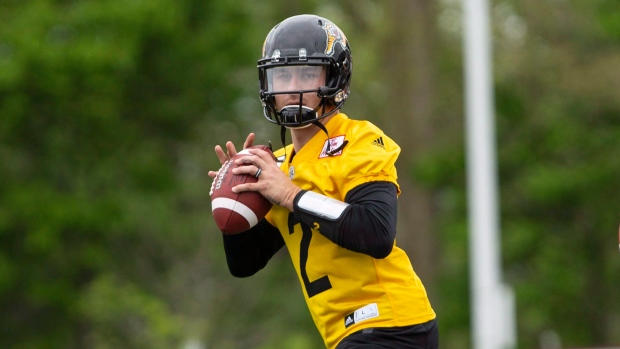May 25, 2018
CFL, Tiger-Cats deserve credit for measured approach with Manziel
Bringing Johnny Football in under the league’s existing business model, without exceptions, is a no-risk proposition with a lot of potential rewards, Dave Naylor writes.
By Dave Naylor

Now that he’s here, now that the circus is fully in town, it’s time to give the Canadian Football League and the Hamilton Tiger-Cats some credit for the way they handled the pursuit of Johnny Manziel.
In fact, the team and league didn’t pursue him at all, beyond trying to sell him on the opportunity once they determined he was serious about becoming a Ticat as a way to continue his professional football career.
It’s a sign of maturity for the CFL that it always seemed to understand that Manziel needed the league more than it needed him, that no one player is worth compromising your integrity or your business model.
The Tiger-Cats played it cool, as if life would go on just fine with or without Johnny Football.
And the CFL, fully aware of his potential impact, both good and bad, did the right things to make sure this relationship was really going to work.
It hasn’t always been the case in a league that’s often been willing to bend its rules or look the other way in certain circumstances, always capable of justifying the means by the end.
That’s how Ricky Williams ended up with a half-million-dollar salary from the Toronto Argonauts in 2006 as the only CFL player afforded a true one-year contract at the time. Williams didn’t sell many tickets or rush for many yards, but in the process he took a sliver of the league’s integrity with him.
As did Rocket Ismail when the league allowed the Argos in 1991 to play him $4.5 million (U.S.) per season, more than any football player on the planet was earning at that time, despite the league having a salary cap of roughly half that amount. It was a big play, it was unsustainable and it ultimately did the league as much harm as good.
It was the same when former Super Bowl quarterback Vince Ferragamo came to Montreal in 1981 when the Alouettes outbid the L.A. Rams for his services in a deal that destabilized their organization when he turned out to be a bust.
Doug Flutie, who is the exception to so many rules in professional sports, was the one big pay day that panned out, entering the league as its highest-paid player in 1990 and then quickly ascending to a $1 million salary that the league’s accountants of the day decided didn’t count against the cap.
But this time, there were no loopholes, no special deals for Johnny Football. Though his representatives undoubtedly pushed for such things as a higher rookie salary and the opportunity to return to the NFL after just one season, the league wasn't budging.
To the contrary, it took a measured approach to the Ticats desire to sign Manziel last September, asking him to demonstrate a change in direction of his life before it would allow him to sign a contract.
It may not be that easy, especially if any of the proposed start-up leagues in the U.S. actually get off the ground.
For now, however, Manziel has to live with being the highest-paid CFL rookie – Williams aside – in a couple of decades.
By bringing him in under the league’s existing business model, without exceptions, Manziel is a no-risk proposition with a lot of potential rewards.
If he is successful and wants to commit to the CFL in the long-term, he might one day become the league's highest paid player.
But this is a league where very little is promised to those who are unproven.
That’s good for the fans, fair for the other players in the league and ultimately good for the CFL.
The league, in this instance, managed to land one of the biggest names in pro football without having to compromise.

